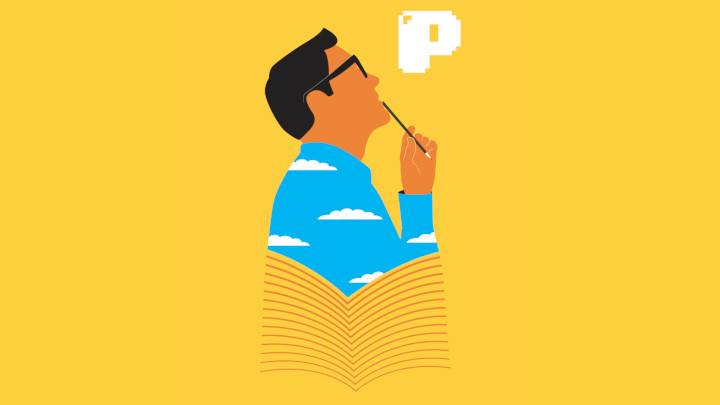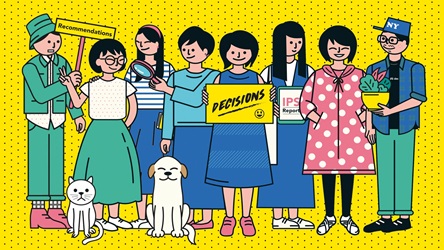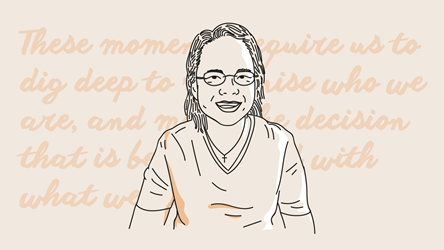Rhyme And Reason: What Poetry And Policy Have In Common

Many believe that policy work involves rational argument, deep reserves of patience, and reams of red tape. Poetry, on the other hand, seems open-ended and spontaneous; the product of free and fluid self-expression.
Having seen a little of both, it strikes me that they have more in common than meets the eye. Though poetry and policy can each seem distant from daily experience, their practitioners capture and structure our lives in profound ways.
And though they attract quite different personalities, they draw on similar skills and starting points, qualities which if better understood might help us to appreciate the roles they play in our public sphere.
What are these similarities? Since I am a poet (and equally, a public officer), I tend to think of them as four ‘C’s:
First, both are categorical
As a teenager attending open mics, poetry appealed to me as a way of making sense of the world, by putting the vastness of human experience into clean, powerful lines. The magic of poetry seemed to dwell in drawing universal truths from carefully observed scenes, like how a dialogue between ‘two mothers in a hdb playground’ (as in Arthur Yap’s poem of that title) might speak volumes about that uniquely Singaporean trait, kiasu-ism.
This, I’ve found, resembles what we in the Public Service call ‘sense-making’, the process of sifting through data – from rush-hour statistics to forum letters – to see the patterns that lie beneath the surface. Like poets, policymakers must make time to ‘listen’ to the data, so as to condense observations into meaningful categories that help us organise our world.
There are proactive ways to do this. Last year, my colleagues from the Financing Experience Unit at the Ministry of Health (MOH) organised a series of attachments where we shadowed teams of front-liners (such as medical social workers) in public hospitals. This first-hand experience helped us grasp the concerns they face in helping patients navigate the healthcare system, which continue to shape our discussions on financing and affordability.
Second, both are cultural
Poetry is a cultural artefact, but we can easily forget that policy is, too. Just as poets rely on pre-existing associations to ensure that the images they use will resonate with readers, public officers are sensitive to how policies interact with widespread perceptions to shape behaviour.
One example is the poem ‘Made of Gold’ by Alvin Pang. Taking the perspective of a migrant worker, it ends with the lines ‘If only someone told / me the walls of Tekka / are not made of gold’, referring to the speaker’s wonder at using an ATM for the first time, as well as the realisation that he has been sold on a false promise. These ideas rely on deeper associations, such as the symbolism of gold in Asian cultures, and narratives of success in our global city-state.
The ways in which we craft and communicate policy are also bound by cultural understandings. Recently, I was able to facilitate at the MOH’s citizen design workshop for patients, caregivers and clinicians to co-design our National Diabetes Reference Materials. I was moved by the participants’ stories of how family and friends responded to news of a diagnosis, from demonstrating supportive partnership to offering flawed (if well-meaning) advice.

This is the world in which all our schemes and proposals must operate. What assumptions or perceptions are there in the public sphere that policies must seek to challenge, leverage, or preserve?
Third, both are collaborative
Poets are often misunderstood as solitary artists, writing chiefly of and for themselves. The truth is, poems do not speak into a vacuum. They address a broader conversation among writers and readers that extends beyond any one individual. Poets develop and critique the ideas of their peers and also those who have come before them.
Sound familiar? Policy decisions are never the work of a single officer, but the product of cycles of input and iteration. Though the ‘clearance chain’ can be frustrating, it is designed to widen the conversation to those with different levels of expertise and experience. Just as the sense of a poem deepens if we appreciate the writer’s literary and cultural context, the beauty of the policy process lies in each officer bringing her perspective to the table, to inform discussions and outcomes.
No individual policymaker has all the answers. This is humbling and also refreshing, as it prompts us to listen more closely to others, and reminds us that if our policy decisions are to be true to a wider citizenry, then we should continue to welcome a more diverse and equal Public Service.
Finally, both are compassionate
At heart, compassion requires an openness to lives other than our own: a sensitivity towards their perspectives, and a commitment to their best interests.
Both the poet, seeking to represent and celebrate human experience, and the policymaker, seeking to improve it, must start from the belief that we should try to understand, support, and protect those around us.
Poets and policymakers will not always agree on how best to achieve this. Quite often, they will approach issues differently, given the tools and perspectives they have access to. But they share a common starting point, and this can form a basis for regarding each other in good faith. Those who wear both hats have a role too, in affirming the qualities described above, regardless of which capacity we may be speaking in and from.
Though I’ve only spent a year in the Public Service so far, the work has already begun to make me a better writer. I have no doubt that seeing through a poet’s lens will add to my perspective as a policymaker, too – and I’m excited to see where this road will lead.
The takeaway
- Poetry and policy share plenty in common
Both are categorical, cultural, collaborative and compassionate. - Poets and policymakers capture and structure our lives profoundly
They draw on similar skills – observing, sense-making, writing – and have common starting points. - Regard each other in good faith
Though poets and policymakers may approach issues differently, both share a common starting point of caring about people and the human experience.
- POSTED ON
Jan 29, 2020
- TEXT BY
Theophilus Kwek









